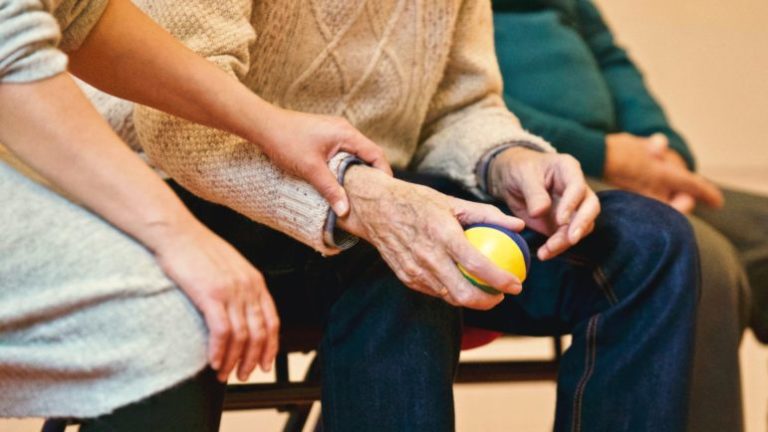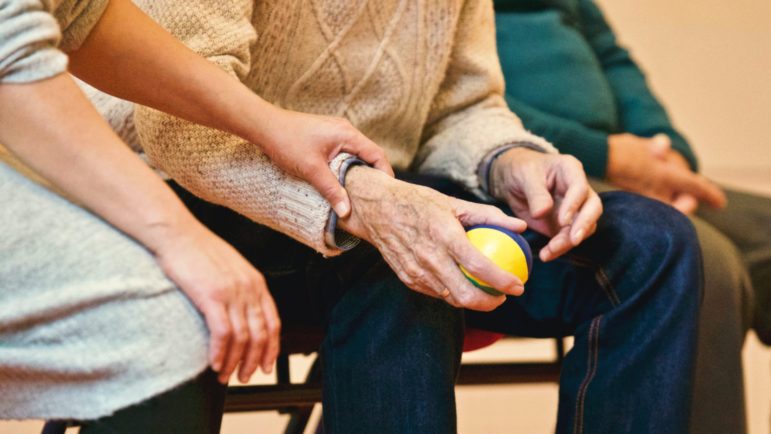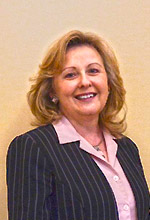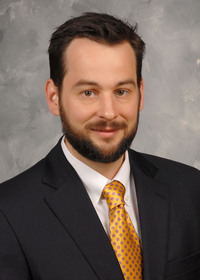

Once the coronavirus is brought through nursing home doors, it’s nearly impossible to scrub out before it has taken its toll on nursing homes.
VAIDEN — Relief was the first emotion that overcame Carla when she received a letter that an employee at her sister’s Mississippi nursing home tested positive for COVID-19.
Her initial response, although unusual given the circumstances, was justified. For weeks, she’d been in the dark regarding conditions inside her sister’s facility. The letter said that just a single case was identified and the employee immediately isolated outside of the facility.
But for Carla, who asked for anonymity over concern that her sister could later be mistreated, that relief quickly gave way to fear — she knows how infections can race through facilities if not stopped quickly.
Just three days after she received the letter, that fear compounded when she received a call: Her 89-year-old sister had just tested positive, one of the first cases among residents at Carroll County’s only nursing home. A single case, considered an outbreak by the state health department, in late April prompted testing throughout the facility. Then the cases among residents and employees started to explode. Cases jumped from two in late April to 29 in less than a week. By May 9, just two weeks after the first positive test, cases grew to 45, where they have since stood.
Coronavirus hits nursing homes like a bomb. Once the virus is brought through the doors, it’s nearly impossible to scrub out before it has taken its toll. The setting inside long-term care facilities is a perfect storm for virus spread: a close-quartered residential center with lots of shared space, waves of visitors and workers coming and going, and home to exclusively elderly and folks with illnesses that render their immune systems weakened and less capable of fighting off disease.
Moreover, the care needed in these facilities demands close contact — just the kind that has been delayed in other health care settings and shunned by social distancing guidelines — like feeding, helping with meds and invasive devices, and assisting with general daily activities.
The case surge in Carroll County is not unique, though it is the largest outbreak linked to a single-facility county. Last week, Carla learned that her sister’s re-test was positive, an unwelcome sign to family and staff that the outbreak is still active and potentially spreading through the facility. Though her sister isn’t showing any traditional symptoms, she is getting weaker, Carla says.
Carla’s only sister is one of the more than 16,000 Mississippians currently living in a long-term care facility. Carla hasn’t seen her sister in more than two months and is afraid the dementia, which rendered long-term care the only safe option, will take over completely by the time they can see each other again. They’ve always been close, even through their two-decade age difference, and the almost one-year stint at the home was already hard enough before the pandemic hit.
“I’m afraid after all this that when I go back, she’s not going to know who I am,” Carla said, holding back tears, adding she’s the only family member left that her sister remembers. “She doesn’t understand why I can’t come. They (staff) explain to her about the virus, but 15 minutes later, ‘Why isn’t my sister here, why isn’t my sister coming?’”
Vaiden Community Living Center, one of the 211 across the state but the sole nursing home in Carroll County, only houses 60 beds.
Rachel Ethridge, spokesperson for Community Eldercare Services, which operates Carroll County’s nursing home and 18 others across the state, said most of the facility’s cases were among staff, 23 of whom have recovered and are returning to work. Though some residents are awaiting re-tests, at least 12 have recovered, Ethridge said Wednesday. Eight residents who tested positive for COVID-19 have since died, according to MSDH records. As is, at least three-quarters of the nursing home’s resident capacity has been diagnosed with the virus.
Statewide, more than one in 10 of all long-term care residents have been diagnosed with COVID-19. It’s unclear how many cases are still active, but nearly 20 percent of those who’ve contracted the disease in a facility — 332 — have died, four times the death rate of the state’s general population.
Though residents of long-term care — nursing homes and other residential facilities, such as assisted living centers, rehabs and homes for those with developmental disabilities — only comprise 13 percent of all COVID-19 cases in Mississippi, they’ve accounted for just over half of all deaths. In May alone, long-term care residents have driven the death toll, accounting for 65 percent of the month’s deaths so far and one-third of all deaths since the pandemic began. Nationally, long-term care cases account for about 11 percent of all cases, and one-third of deaths.
Some nursing homes have fared worse than others. Though it’s unclear why, State Health Officer Thomas Dobbs said Friday new targeted testing was helping to identify unknown outbreaks, adding, “In places with really good infection control practices, a lot of times we’ll find zero cases.”
Nursing home spread was slower to materialize in Mississippi than other states. The state only started counting outbreaks — considered to be one case among a resident or an employee due to the quick nature of spread in these settings — in early April, when 24 counties had long-term care outbreaks, totaling 28 cases and accounting for only 2 percent of all cases.
The state health department began releasing death information for long-term care in late April but has declined to name the facilities citing long-standing protocol and fear of stigmatizing residents and facilities. The Pine Belt News organization sued the state health department in May for failure to release the names through a public records request. Tuesday a judge ruled the health department must release the names or cite a legal reason not to.
When death data was first released by the health department, long-term care facility residents accounted for 10 percent of cases and a third of all deaths. Now, cases among residents have only grown to 13 percent of all cases, but account for more than half of all deaths. Deaths among residents grew by 337 percent in less than a month, compared to the 116 percent growth in deaths among those outside of long-term care.
But once the inflection point hit, it spread exponentially. Long-term care cases reached 470 by April 21 and nearly tripled in less than three weeks, ultimately surpassing 1,700 late-May, despite best-efforts to clean and hard choices to keep family out — the risk of spread too high.
Most long-term care facilities have prohibited visitors since mid-March at the health department’s suggestion and the federal government’s mandate soon thereafter. But without visitation, many families say they’re in the dark about their family member’s condition.
Dr. Keith Mansel, palliative care physician at the University of Mississippi Medical Center, specializes in helping families work out their end-of-life and health care goals, merging their medical and emotional needs. But this is like nothing his specialty has seen, he says, and he worries that the isolation felt by both family and patient can add to layered medical complications.
“I’ve learned in palliative care that two things as we get older are so important – our function, our ability to get up and go, and socialization. That lack of socialization is a risk factor for our health and it’s actually a risk factor for life and death, we’re social beings,” he said, adding it’s not only that COVID-19 prevents family from visiting the facility — most residents too are stuck only eating in their rooms and banned from group activities, like card games and trips.

Mansel continued: “And what’s really worrisome during isolation is what that’s doing to other comorbidities. I worry about people that may have mental health issues, mild cognitive dysfunction … I worry about all this, particularly in a state that has so many underlying health challenges. I think it will be years, but we will unfortunately learn about what the pandemic has done – not just directly from COVID, but indirect effects, too.”
He adds that face masks and social distancing requirements for health care workers, while vital, can add confusion for older folks and risk losing human connection so important to their well-being.
“For centuries, doctors have sat at the bedside and leaned in, and touched when appropriate,” Mansel said. “I think that’s hard on patients when they (providers) can’t do that.”
Carla, who lives in Attala County, has only spoken to her sister at the Vaiden facility once in the more than two months she hasn’t been allowed to visit, when a nurse called her and handed over the phone, she said. She’s had trouble getting through to the facility and fears for her sister’s safety when she can’t check on her with her own eyes, she says.
“You don’t notify a family that an elderly person has tested positive for a deadly virus and then have no contact with them whatsoever,” she said, adding that communication did improve a few days after she got the news. “This is the blessing of the dementia – she can’t remember. As bad as dementia is, when they’re in a situation like this, it’s a blessing.”
Ethridge, the spokesperson for the Carroll County facility, says it’s been all hands on deck for months, which makes it tough to make ends meet, she says, especially temporarily losing two dozen staff to the virus.
Eddie Johnson’s father, Sammie, also lives in the Vaiden nursing home, and echoes Carla’s concerns about communication. His father also tested positive late April but has since recovered. Sammie does not have access to a phone, so the lapse in communication, in addition to no visitation, has been even more concerning amid the outbreak, said Johnson, Sammie’s only living child.
“It’s not the nursing home’s fault. The state did what they thought was the right thing to do to stop the spread of this, but it cut our contact off,” Johnson said. “That has been the hardest part of this whole thing.”

Johnson lives outside of Memphis, so he’s used to not being able to visit often. But he’s also used to relying on nearby family’s frequent reports after visiting Sammie. Without those reports, he says it’s been hard, even knowing his father is physically safe. Still, Johnson worries about his father’s mental health.
“When you get that phone call that your dad has tested positive and he also has pneumonia on top of that — he’s 84, he has health problems, his wife and daughter died recently — is he going to survive this?” Johnson said. “That’s been the scary thought going through my mind this whole time, then you call several times a day – first thing in the morning, mid-day and before bed, sometimes they’re not able to answer at all. But, he’s always been a fighter … he’s got a lot to live for.”
Carroll, Kemper and Smith counties, scattered across the central belt of the state from the Delta to the Alabama line have recently shown quick case growth, initially driven by a single long-term care facility outbreak. Each of the three counties have just one nursing home — all three of which have active outbreaks with at least 28 COVID-19 cases each, though some have recovered and 21 have died. Together, they’ve had 103 resident cases among the three facilities, according to the health department, not counting staff cases and compounding enough cases to fill nearly half of all beds’ capacity among the facilities.
State health officer Thomas Dobbs announced universal testing in nursing homes mid-May, saying every resident and staff of every nursing home will be tested over two weeks, covering 27,000 Mississippians. Centers for Medicare and Medicaid also recommends all facilities conduct baseline tests to identify any cases and have weekly testing protocol thereafter if any cases are found. The state has said they will make testing kits available for any nursing home in need.
Dobbs said Tuesday he expects the nursing home testing to wrap up soon. So far, the testing has helped identify previously unknown cases, including asymptomatic residents and staff, he said, and increased total long-term care outbreaks to a peak 121. There are 211 nursing homes in the state.
Ethridge, of the Vaiden facility, said they recently completed facility-wide testing, but they’re bracing for the impact of re-testing after the first rounds decimated staff and diagnosed 45 residents.
The pandemic is challenging aging health care models in a time when health care systems are bracing for an overall aging of the country. Models have shifted to prioritize aging in place, keeping folks out of facilities where possible. When it’s not possible, an emphasis on autonomy and independence pervades.
Nationally and in Mississippi, population estimates project that the median age will shift from 37 in 2010 to 39 in 2040. In Mississippi, the 65 and older population will grow slightly faster than the national rate, from 13 percent in 2010 to 20 percent by 2030. While the jumps may not seem dramatic, they’re a significant step in a trend toward an older America, which will challenge both health care and industry to think differently, experts say.
Teresa Carithers, head of the Applied Gerontology department at the University of Mississippi, says the pandemic has spawned innovation and hopes it will set a new bar for aging care. The program she leads focuses on helping students look at the science of aging through a different lens — less so, how to simply care for old folks and more, how to age healthily throughout life and focus on quality of life.

“If you look at the numbers (projections) we are faced with, we will never be able to build enough nursing homes or assisted living to accommodate the numbers, so we also have to look at innovation and that is for people to age in place,” she said. “We’re living longer, we want to incentivize health aging, and that can be done through many different areas. We need to start talking about healthy aging at early ages, not waiting until we’re 60 to start an exercise program — we’re looking at healthy aging from birth until the end of life.”
Carithers adds that for cases like Sammie’s in Vaiden, health care should shift to focusing on resilience, even under grim forecasts.
“Deaths are something that we try to prevent, but when you have the most vulnerable population in a confined environment and the two groups that most likely would transmit, visitors and health care professionals who are trying desperately to care for those individuals, then we have to understand that some of the numbers are inevitable,” she said. “You really need to give even the elder that survives COVID hope for the rest of their aging year.”
Part of knowing how to shift aging care models and better care for those impacted is having precise data, says David Buys, assistant professor at Mississippi State University’s Extension program, who focuses on state-level population health and data. He’s been running daily statistics on COVID-19 case and death rates, and says long-term care offers an important example.
Digging through the data from the state health department paired with federal statistics, Buys found surprising aspects once he broke out long-term care rates from the general population. Though African Americans contract and die from COVID-19 disproportionately, the death rate among white people is higher overall — meaning if a white person contracts the virus, they’re more likely to die from it. Once Buys pulled long-term care out of the equation, he realized that setting was driving the white death rate, noting white folks are more likely to reside in long-term care, too.
“Given what we know about health disparities in Mississippi, I was surprised by that, so I started to consider what might be driving those differences. It was just about the time we started hearing so much about outbreaks in long term care facilities in the state,” Buys said. “Sure enough, we saw that the rates between African Americans and Caucasians in the community were in the same direction, meaning that African Americans had higher case rates, case fatality rates, and population death rates than whites. In long term care settings, though, African Americans had higher case rates, but lower case fatality rates and population death rates.”

Knowing how populations are impacted differently is crucial to better caring for them, Buys says, adding that he commends the state health department for releasing the level of data they have already, but hopes it continues to expand.
“I hope that as we learn more about these nuances like I’ve been able to find, and that as the agency finds their rhythm and pace, they will be able to release even more data to help give us a picture of where we need to focus our efforts on prevention, treatment, and recovery of this pandemic,” Buys said. “In particular, it would be great to get more granular data on where the outbreaks are happening, including LTC (long-term care) names and locations; age breakdowns and other data points that are linked to each other.”
The post Mississippi officials target nursing homes, where coronavirus spread creates a perfect storm appeared first on Mississippi Today.
- Lots happening in the Crooked Letter State… - December 17, 2025
- Auditor: Half of state education money should go toward raising teacher pay - December 17, 2025
- ‘Being creative represents a form of freedom’ for those behind bars - December 17, 2025